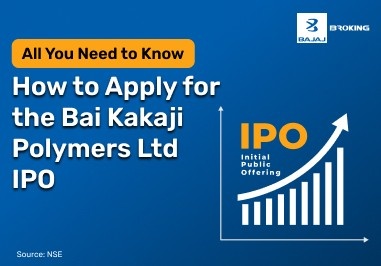HFT is not the same as the old buy-and-hold method. It's trading on steroids, with computers and algorithms that let companies make hundreds of trades in less than a second. These people don't want to make money over time. They want the speed, the size, and the small profits that pile up quickly.
Many people stay in our positions for weeks or months, but high-frequency traders get in and out in less than a second. The significant factor here is that how rapidly they can find and take advantage of price differences on sites like NSE and BSE, especially for equities and derivatives.
How High-Frequency Trading (Hft) Firms Work?
Companies that undertake high-frequency trading don't make decisions as people do. No one is yelling "buy!" at the screen. Algorithms do all the work instead. It does everything on its own, from reading price changes to negotiating agreements. This is how it works:
1. Getting Information
Data is what everything begins with. These companies get their stock market data straight from the exchanges, not through apps. They get data in its raw form, one tick at a time. The principle is simple: the quicker you get the data, the quicker your computer can use it.
2. Making the Algorithm
Quants and engineers step in to build the trading models. The goal? To catch trends, price gaps, or anything unusual—and act on it. All of this happens in just milliseconds, so by the time you blink, the trade is already done.
3. How to Stick to the Plan
Speed is only helpful when you can do anything with it. The system sends the order via a faster route when it sees a transaction. The system calculates out on its own which exchange might have a better price or faster execution.
4. The Advantages of Colocation
Things are getting out of hand here. Companies do put their servers in or near the building where the stock market is. That little bit of time, only a few milliseconds? It might mean the difference between losing money and winning money. A lot of people don't agree with it, yet it's legal.
5. Taking care of risks
You can't be surprised when there are thousands of trades going on. These systems always check for exposures, create stop-losses, and keep an eye on risk in real time. If something seems odd, they stop the trade right away.
6. Testing and Improving Things
We check everything against data from the past before we go online. It's like a test run. Companies change their models over and over again until they get them just right. It probably won't work now if it didn't work previously.
To be honest, each of these levels is meant to conserve microseconds, because in high-frequency trading, milliseconds are valuable money.
Strategies HFT Firms Use
HFT may seem like mindless machine speed, yet there is a true design behind it. These companies don't take risks. They use what they know about how the market works.
1.Making a market: One approach to make money is to put in both buy and sell orders at the same time to take advantage of the difference between the bid and ask prices.
2.Arbitrage trading: Buying in one market and selling in another to take advantage of small price differences.
3.Getting things started: Small deals start the trend, and businesses ride the wave that started it.
4.Arbitrage based on numbers: Using correlations to figure out when prices will go back to normal.
5. Buying and selling based on what happens: Getting back to news or earnings faster than anybody else.
They're not making these plans; they're just doing them better and faster than we are.
How Do HFT Firms Make Money?
You don't have to own a stock for days to make money. High-frequency trading companies need a lot of volume and repetition. Over time, a few paise here and a few rupees there add up.
This is how they have fun:
Price differences: They notice and act on even the little variation between the bid and ask.
High volumes: There are thousands of deals per day, which means there are thousands of chances.
Exchange incentives: Sometimes exchanges provide companies that add liquidity a reward.
Speed advantage: They win if they get there first. That's how it is.
It combines math, network latency engineering, and good old market instinct into code. The Securities and Exchange Board of India (SEBI) is in charge of high-frequency trading (HFT) in India. It makes rules to stop cheating and make sure everyone can get in.
Benefits and Risks of HFT
HFT, like everything else powerful, has two sides. It makes things work more smoothly, but if you don't pay attention to it, it could also make things less stable.
Pros:
It makes more trades happen and makes them bigger.
It makes the difference between bids and asks less, which is advantageous for retail traders in a roundabout way.
Increases liquidity, which makes it easier to get in and out.
Cons:
This is why SEBI and the exchanges have rules for circuit breakers, surveillance, and colocation. If you don't, a fast system can quickly become quite fragile.
Final Thoughts
There will always be trading that happens a lot. It's becoming more and more a part of the DNA of marketplaces today, both in India and around the world. These businesses use the recent technology and the right moment to earn money, yet they only make a little bit of money on millions of transactions.
But HFT isn't a good place for beginning traders to begin. To be honest, even traders who have been at it for a long time have difficulties keeping up. But do you realise how it affects prices and the amount of money you have? You should know this, especially if you care about markets.
It's okay if you're not ready to start making algorithms. A lot of people who buy stocks shouldn't. But at least you know what's going on behind the scenes when you buy stocks next time.
This information is just for your information and does not give you advice on how to invest. BFSL, or Bajaj Broking Financial Services Ltd., does not tell customers to buy or sell stocks.














